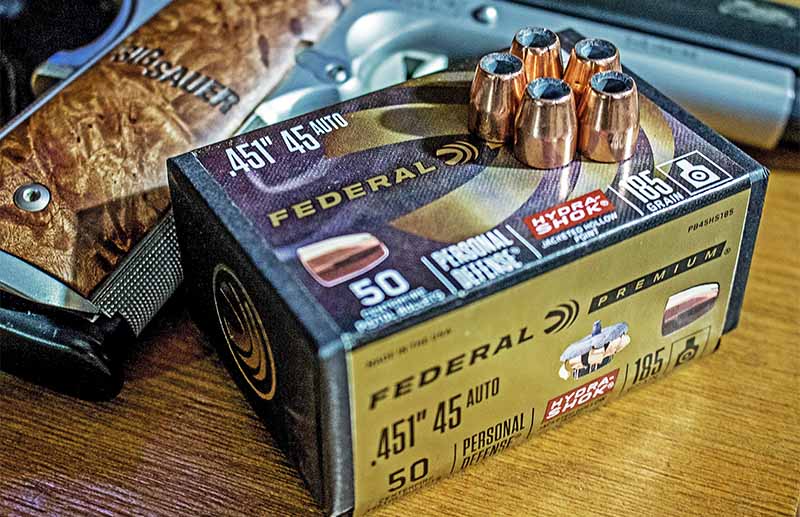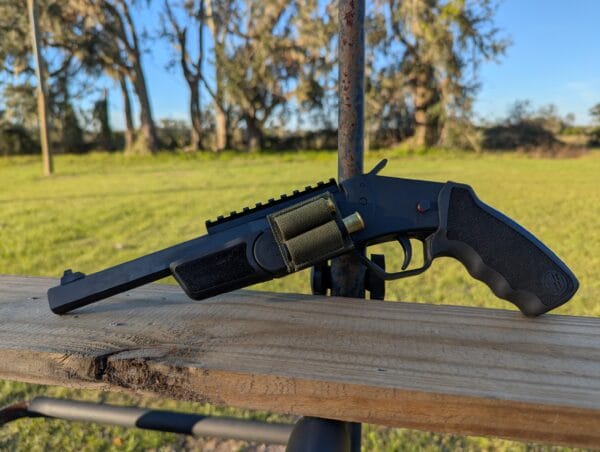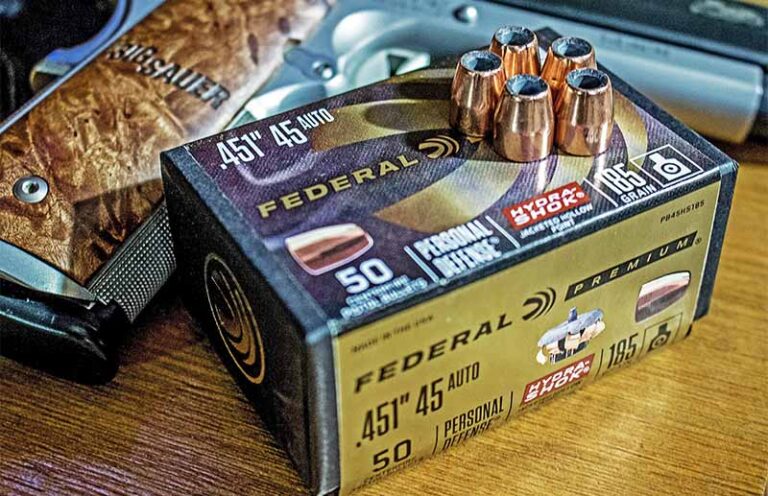
Many armed citizens only trust their lives to factory ammunition, but here’s what you need to know about defensive handgun bullets.
We’ve all heard the rule from on high: Thou shalt not carry handloads in thine everyday carry weapon, lest thou be deemed guilty immediately for saving thine bacon. The concept and reason, loosely stated, is that a prosecuting attorney could possibly convince a jury that you intentionally made “hot loads” (I break out in hives just typing that), or that the threat—which you interpreted to put your life in danger—was farther away than you stated, based upon the penetration of the bullet and/or expansion. Those handloads could indicate—to the uneducated—that you were looking for a gunfight.
Just as I handload almost all of my dangerous game ammunition, on the basis of the idea that I can pay attention to each and every component and aspect of the loading process, I have no problem with handloading EDC defensive ammunition. In fact, handloading my defensive ammunition allows me to inspect all of the projectiles I’ll be using. It gives me an opportunity to tune each and every case, weigh each powder charge and use a consistent crimp. The factory stuff is great—there’s no doubt about that—but I’m the kind of guy who likes to hedge his bets.
Handloading defensive ammunition is not for a lot of people, and I certainly understand that.
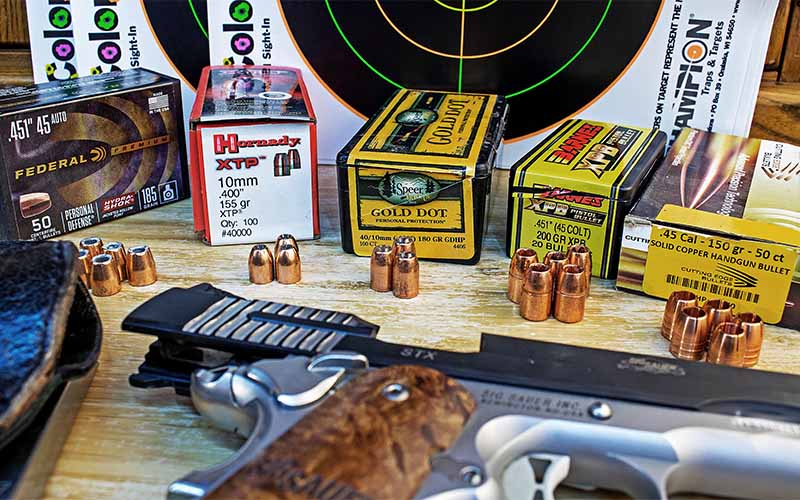
Choosing A Defensive Handgun Bullet
Not all defensive bullets are created equal, and the reloader (or those buying any defensive ammunition, actually) needs to be aware of the differences, similarities, pleasures and pitfalls of the various designs.
What exactly makes a defensive bullet? Well, that’s a highly subjective question, as just about any handgun bullet can be used in a defensive situation. I caught my father carrying plain old lead, round-nose bullets in his .38 snub nose the other day and gasped in horror. Dad replied, “They’ll work, trust me. The government issued them for decades.” Maybe he’s not entirely wrong, but with the availability of modern bullets of premium quality, I’m not carrying lead projectiles. Nor am I carrying a FMJ, which will certainly offer deep penetration, but nearly zero expansion.
I prefer a jacketed hollow-point bullet (as opposed to the plated bullets), engineered to give the best balance of penetration and expansion. If you’re trying to pick out which bullet will work best for you, try searching for some examples of the bullet’s performance in bare ballistic gelatin, as well as after passing through several layers of clothing and/or drywall. The latter two tests can often show you whether expansion is reliable; I’ve seen more than one model plug up with drywall and fail to expand.
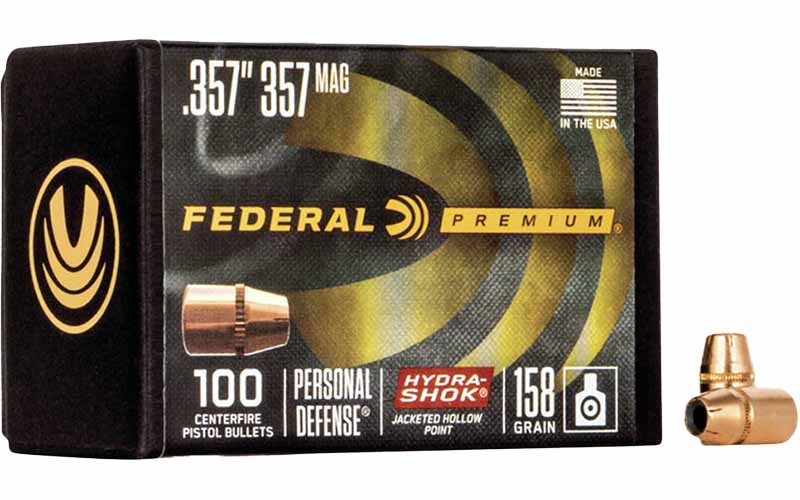
Federal’s Hydra-Shok handgun bullet has been around for more than three decades, yet it still checks all the boxes for an excellent defensive choice. Using a notched copper jacket and a post in the center of the hollow cavity for reliable expansion, the Hydra-Shok has long been a popular choice for law enforcement and is among my favorite designs. Speer’s Gold Dot is another favorite, which has its copper jacket bonded to the lead core. This process allows the hollow-point to expand reliably, yet the bonding process ensures the structural integrity of the bullet, providing very high weight retention. Hornady’s XTP (eXtreme Terminal Performance) handgun bullet is equally suited for a hunting scenario as it is a defensive scenario, using a jacket of varying thickness (growing thicker as you approach the base), which is serrated to initiate equal and even expansion. Both the Gold Dot and the XTP have the jacket slightly wrapped around the nose of the bullet, to protect the meplat during the feeding process in a semi-automatic handgun.
There are also monometal choices, such as the Barnes XPB or the Cutting Edge Handgun Raptor, and while both are hollow-points, they function very differently in the terminal phase. Where the Barnes will retain nearly all of its weight, the Cutting Edge is designed to actually break apart. The Handgun Raptor has cuts along the ogive, and that section along the hollow-point will break into four blades, radiating in a star pattern for some nasty initial trauma, while the base of the bullet (Cutting Edge calls it their Blunt Trauma Base) maintains caliber-diameter, penetrating up to 16 inches in ballistic gel. These aren’t your grandfather’s bullets.
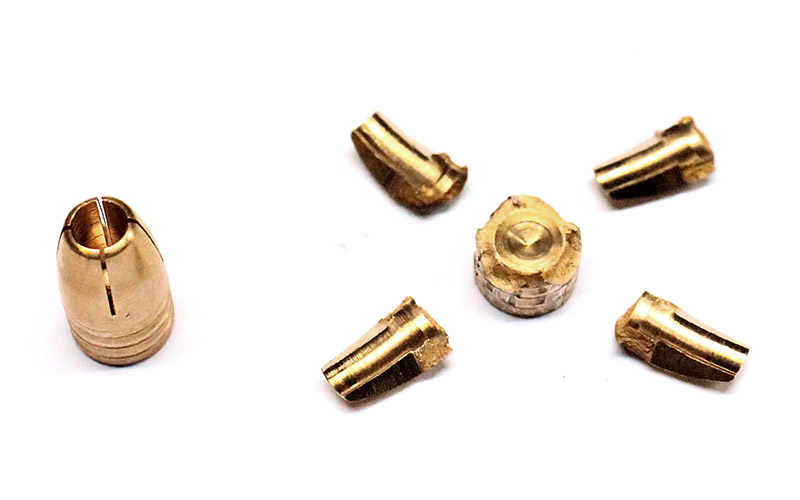
If You Must Build Your Own
Looking at the lead-core bullets, you’ll see those models designed for use in a revolver will sport a cannelure for using a roll crimp, while those designated for the semi-auto guns will not. Those cartridges generally use the case mouth for headspacing and cannot use a roll crimp; rather a good taper crimp will keep those bullets from moving within the case.
Irrespective of the crimp style, I’ve found that the more uniform you can keep your crimp, the more uniform your velocities will be. I reach for the Redding Profile Crimp die for the best roll crimp possible, applying the crimp in a separate operation, after seating the bullet. When I need a taper crimp, I like the Redding Micro Adjustable Taper Crimp dies, as they allow me to fine-tune the amount of crimp being applied, making adjustments for variations in case thicknesses.
The monometal bullets will offer at least one crimping groove, though there might be multiple grooves for different seating depths. Just as with rifle bullets, copper-alloy handgun bullets will be longer than their lead counterparts of the same weight and diameter, as copper is less dense.
Regarding velocities, I’m not necessarily looking to break any records, but rather achieve the most uniform, accurate and sensible speeds. I recommend using load data from the manufacturer of whichever component bullet you’ve chosen, as the configuration and conformation of that bullet can require a specific powder charge range, and often data isn’t interchangeable.
Lastly, I like to pick a bullet weight the same as my practice ammo, so that the recoil and overall feel of my handgun stays uniform when switching from range ammo to carry ammo. Once I’ve picked my defensive bullet, I can then search for a practice bullet, be it a cast-lead bullet or an FMJ.
Editor’s Note: This article originally appeared in the 2022 EDC special issue of Gun Digest the Magazine.
More On Defensive Handgun Ammo:

Next Step: Get your FREE Printable Target Pack
Enhance your shooting precision with our 62 MOA Targets, perfect for rifles and handguns. Crafted in collaboration with Storm Tactical for accuracy and versatility.
Subscribe to the Gun Digest email newsletter and get your downloadable target pack sent straight to your inbox. Stay updated with the latest firearms info in the industry.







